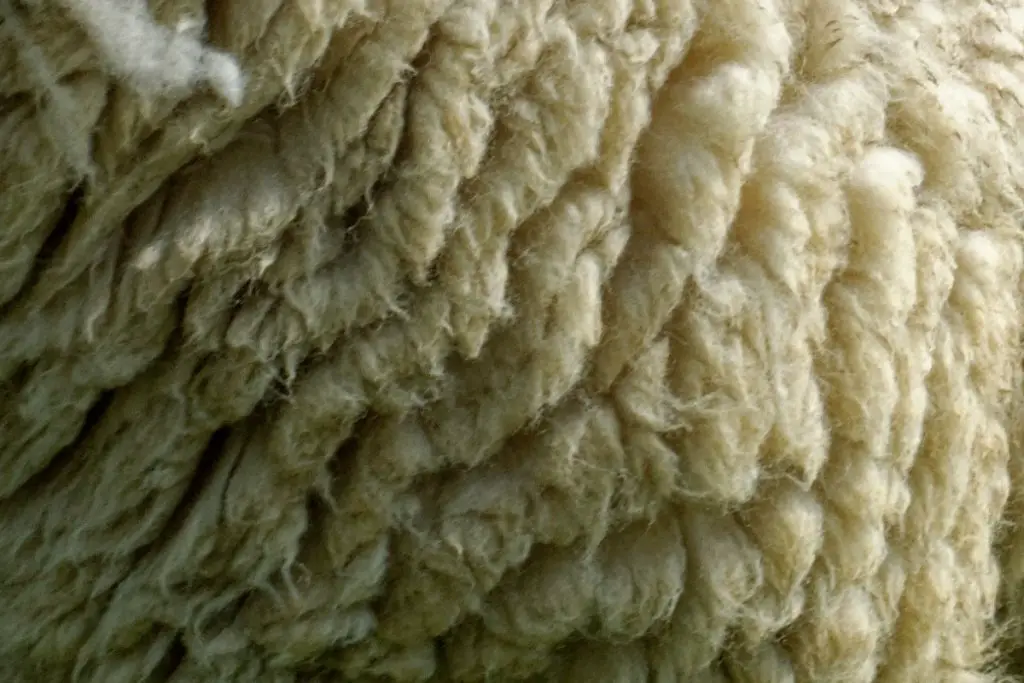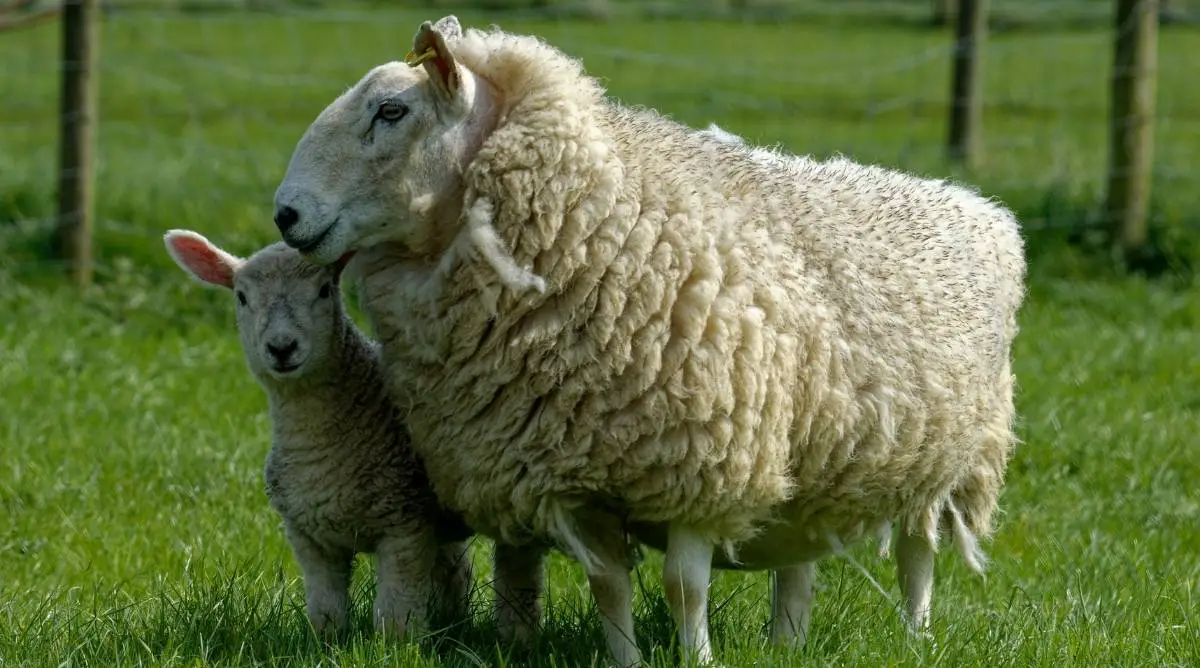Cheviot sheep are native to Scotland. The breed dates back to the 1300s and is known for its resilience, even in hot or windswept conditions. Cheviot sheep have white faces and no wool on their heads or below their knees.
Table of Contents
Cheviot Sheep Breed Origin
The Cheviot got its name from the Cheviot Hills, which can be found on the border of Scotland and Northumberland, England. The breed has been recognized since 1372 in Scotland, where they were first bred. Cheviots are still commonly found not only in Northumberland and Scotland but also in Ireland, New Zealand, Northwest Wales, and Southwest England, especially in Dartmoor and Exmoor.
Cheviot sheep were introduced to the United States in 1838. The Cheviot’s strong constitution, well-developed mothering instinct, and easy lambing caused these sheep to thrive.
In 1938, the Cheviot was introduced to Southern Australia. These sheep were able to withstand Australia’s frigid, wet winters and scorching, dry summers, becoming a favorite of shepherds and livestock farmers.
Cheviot Sheep Breed Characteristics
| Characteristics | Description |
| Origin | Scotland |
| Appearance | Medium-sized sheep with white faces. No wool on their head or ears or below their knees. |
| Wool | Moderate to long wool. Micron of 27-33 and a spin count of 48-56. Average fleece length of 3-5 in. (7.5-12 cm) with a yield of 50-75%. USDA grade of 46-56. |
| Weight | 160-200 pounds (Rams), 120-160 pounds (Ewes) |
| Environment | Hardy, resilient breed that does well foraging in dry or windswept conditions. |
| Common uses | Cheviot sheep are primarily used for mutton. |
| Fertility | One breeding cycle per year. Ewes require little husbandry and have strong mothering instincts. Lambs mature at a moderate pace. |
Cheviot sheep have white faces. Their head and ears are free of wool, leading to a clean, alert appearance.
Cheviots are some of the smaller breeds of sheep if judged by weight. Mature rams weigh around 160-200 lbs. (72-90 kgs), while mature ewes weigh around 120-160 lbs (55-72 kgs).
Cheviots also have no wool below their knees and hocks. Their hooves are black and hardened by outdoor terrain.
Cheviots have an energetic temperament that makes them easy to handle. Ewes can become overprotective of their lambs, while rams can become a bit aggressive, especially if unneutered.
Cheviots have no known health issues and are tough against diseases and parasites, such as worms, drenching, crutching, and fly strike. Cheviot sheep never suffer from wool blindness because of their wool-free faces. Their hard black hooves make foot rot less of a problem.
Cheviot Sheep Wool Production

The Cheviot’s wool can be moderate to long. The wool is free from black fibers, and is mostly straight with a distinct helical crimp. This crimp gives the wool a resiliency that fleece millers and traders prize.
Cheviot fleece has a micron of 27-33 and a spin count of 48-56. The average fleece length is 3-5 in. (7.5-12 cm) with a yield of 50-75%. The USDA grades Cheviot wool at a quality of around 46-56.
Cheviot Sheep Breeding
Cheviot sheep require little husbandry. Ewes birth easily, even without human help, and have a strong mothering instinct that causes few lambing problems.
Cheviot lambs mature at a moderate pace. Lambs reach maturity at around ten weeks. Ewes may start breeding at 18 months, while rams may begin breeding at one year.
Cheviot ewes can handle one breeding cycle per year and usually give birth after about 150-155 days. Rams can cover 5 to 10 ewes in one breeding season.
Cheviot Sheep Breed Facts
- Cheviot sheep were first introduced by Sir John Sinclair. Sinclair selected 500 ewes from Cheviot Hills and introduced them throughout the country.
- Cheviot sheep are often crossbred with other wool breeds. Because of their characteristic hardiness, Cheviot sheep are often crossbred with other sheep breeds, such as Border Leicesters, Merinos, and Lincolns. On the other hand, modern north country Cheviots have been produced not by crossbreeding but by selection.
- Cheviot sheep can take care of themselves. They are extremely resilient because they are left in the wild from summer to winter. Cheviot sheep, even the lambs, are efficient foragers and thrifty feeders.
- Cheviot ewes produce a high number of twins. Ewes also produce enough milk to provide for their twins. Production records show that twins grow at the same rate as single lambs.
- Cheviot sheep have a unique grazing pattern. Most sheep breeds group together to graze on an area, but Cheviots spread out and forage for all available food.
- Cheviot sheep are excellent rustlers. Due to their experience in bleak, frigid, and scorching climates, Cheviots can forage for food even in deep snow.
- Cheviot sheep come in white or dark cream colors.
- American Cheviot sheep are primarily mutton sheep. Though a smaller sheep breed, Cheviots have superior quality broad loins and meaty chops. Because cuts are more meat than fat, Cheviot carcasses are the meat of choice for most butchers and consumers.
- Cheviot sheep are commonly hornless. Some Cheviot rams can produce horns, but they are generally polled.
- Cheviot wool is used to produce Harris Tweed and carpets. It can also be made more durable by spinning into other wool, while some are made into yarns.
- Cheviot sheep start producing wool at six months. These North country cheviots produce approximately 1.5-2 kgs of wool a year.

